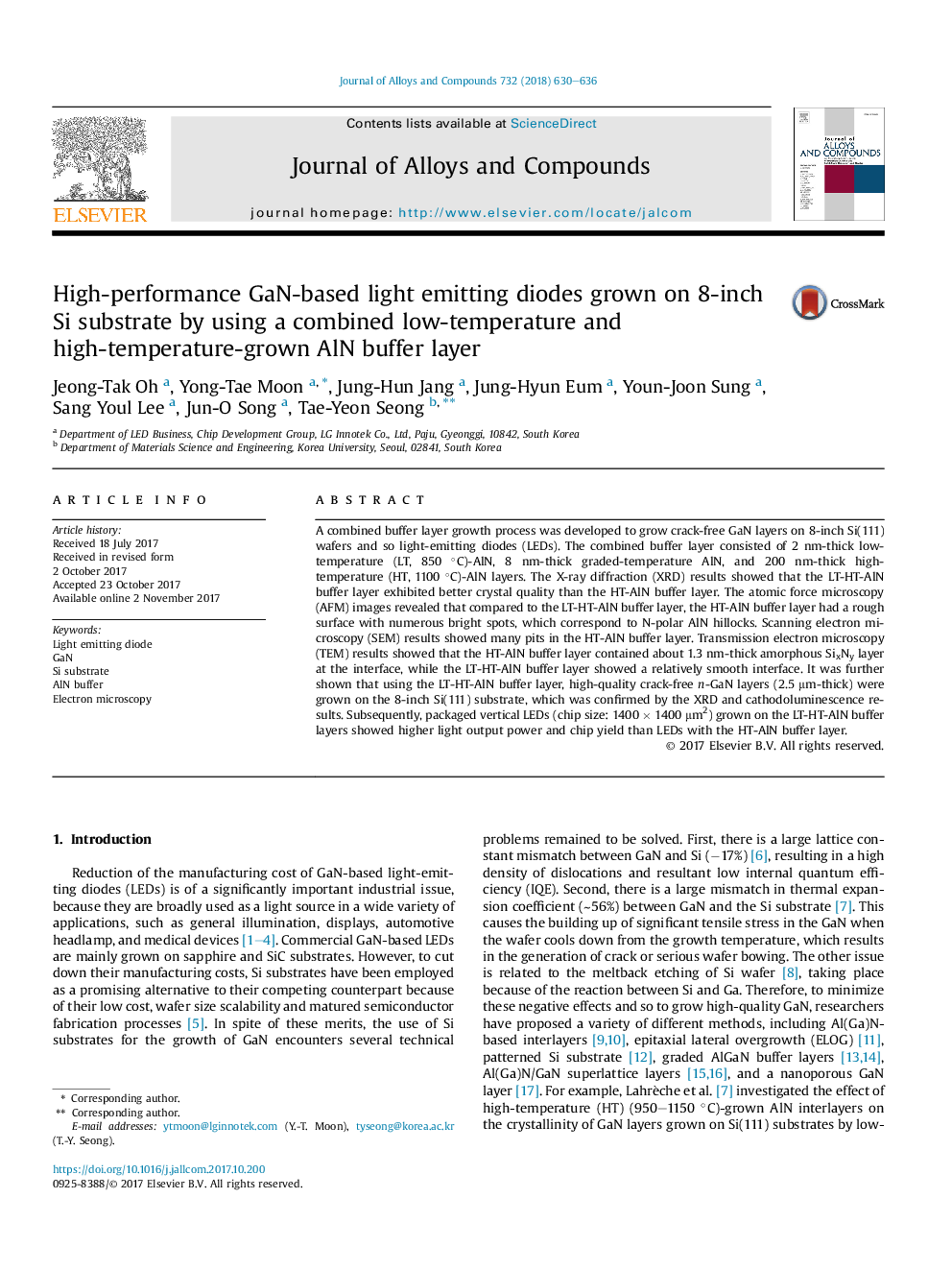| Article ID | Journal | Published Year | Pages | File Type |
|---|---|---|---|---|
| 7995126 | Journal of Alloys and Compounds | 2018 | 7 Pages |
Abstract
A combined buffer layer growth process was developed to grow crack-free GaN layers on 8-inch Si(111) wafers and so light-emitting diodes (LEDs). The combined buffer layer consisted of 2 nm-thick low-temperature (LT, 850 °C)-AlN, 8 nm-thick graded-temperature AlN, and 200 nm-thick high-temperature (HT, 1100 °C)-AlN layers. The X-ray diffraction (XRD) results showed that the LT-HT-AlN buffer layer exhibited better crystal quality than the HT-AlN buffer layer. The atomic force microscopy (AFM) images revealed that compared to the LT-HT-AlN buffer layer, the HT-AlN buffer layer had a rough surface with numerous bright spots, which correspond to N-polar AlN hillocks. Scanning electron microscopy (SEM) results showed many pits in the HT-AlN buffer layer. Transmission electron microscopy (TEM) results showed that the HT-AlN buffer layer contained about 1.3 nm-thick amorphous SixNy layer at the interface, while the LT-HT-AlN buffer layer showed a relatively smooth interface. It was further shown that using the LT-HT-AlN buffer layer, high-quality crack-free n-GaN layers (2.5 μm-thick) were grown on the 8-inch Si(111) substrate, which was confirmed by the XRD and cathodoluminescence results. Subsequently, packaged vertical LEDs (chip size: 1400 Ã 1400 μm2) grown on the LT-HT-AlN buffer layers showed higher light output power and chip yield than LEDs with the HT-AlN buffer layer.
Related Topics
Physical Sciences and Engineering
Materials Science
Metals and Alloys
Authors
Jeong-Tak Oh, Yong-Tae Moon, Jung-Hun Jang, Jung-Hyun Eum, Youn-Joon Sung, Sang Youl Lee, Jun-O Song, Tae-Yeon Seong,
